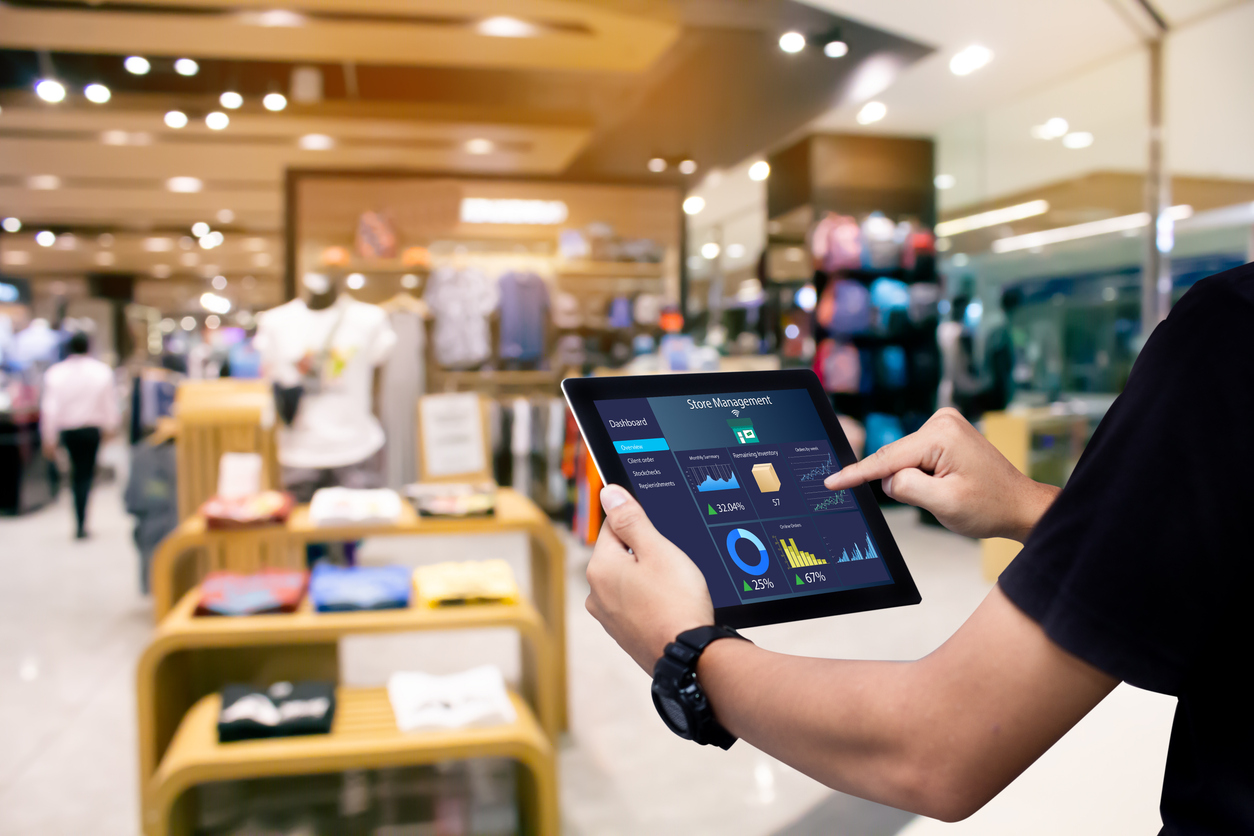In retail, every connection is a risk. From IoT-enabled shelves to handheld POS devices, today’s store environment is a live network – fast, frictionless, and vulnerable. Retailers are constantly innovating to find new ways to engage customers and remove the barriers that stand between them and their decision to make a purchase. New apps, loyalty programs, location-based marketing, targeted campaigns – but while retailers up their technology game, so are the cybercriminals looking to take advantage.
A string of recent cyberattacks has put the UK’s retail sector on high alert, with well-known brands like Marks & Spencer, Harrods, and the Co-op caught in the crosshairs. The campaigns, believed to be linked to the Scattered Spider group, relied on high-pressure social engineering tactics, including posing as internal employees to manipulate help desks and bypass security protocols. At M&S, the breach triggered immediate fallout: online services ground to a halt, employee data was exposed, and the company’s valuation reportedly took a £1 billion hit. But the real concern goes deeper. These incidents exposed how easily attackers can exploit trusted third-party software and supply chain dependencies, turning everyday vendor interactions into critical weak points. The message? Cybercrime is no longer just a problem for “big tech” and finance – it’s aiming straight at retail’s core: its data, its systems, and its people.
Yet while cybersecurity technology has matured, with some retailers taking advantage, the training hasn’t. Cybersecurity awareness on the shop floor hasn’t kept pace with the growing complexity of threats. In an environment where a single compromised login or fraudulent transaction can lead to a major breach, frontline staff are no longer just employees, they’re part of your first line of defence. If cybersecurity isn’t embedded in how retail teams think and act, the business remains exposed.
The Industry Hackers Can’t Resist
Cybercrime has become big business, and retail is now one of its favourite targets. Forget the image of lone hackers quietly siphoning data. Today’s attacks are industrial in scale, often automated, and highly profitable – and retailers are an easy target. That’s why retail has now made the top 6 list of the most targeted industries worldwide. Each connected device, from smart tills and in-store tablets to online checkout systems, adds another point of vulnerability. In 2025, the cost of underestimating cybersecurity is far higher than the cost of investing in it. And when trust is broken, it’s not easily rebuilt.
When the Firewall Wears a Name Badge
The shop floor is no longer just about merchandising and customer service, it’s a digital frontline. Staff now interact daily with connected systems: barcode scanners, self-checkouts, mobile POS terminals, stock apps, and customer accounts. Yes, they’re handling products – but they’re also handling risk. The vast majority of breaches are caused by human error, and phishing continues to top the list. In 2024, 84% of UK businesses reported an attempted cyberattack, most commonly via phishing emails. The retail workforce, often seasonal and frequently changing, is especially vulnerable to these social engineering tactics. Yet too often training is limited to generic e-learning modules during onboarding, with little relevance to real-life threats or practical decision-making.
A single misstep, such as one click on a suspicious link or one incorrect download, can open the door to a full-scale compromise. Instead of penalising staff for making mistakes, they need to equip employees to recognise when something feels off and empower them with the confidence to act quickly or raise the alarm.
Stop Box-Ticking, Start Training
Most retailers can say they offer cybersecurity training. Far fewer can say that training works. The issue? Much of it is designed to satisfy policy, not protect systems. Static e-learning modules rushed through on day one and never revisited don’t build resilience, they just build complacency. Effective training starts with context – a cashier doesn’t need the same training as an IT manager. Frontline staff should know how to spot tampered payment devices or suspicious customer behaviour. Managers need to recognise phishing attempts and understand escalation protocols. Role-specific, scenario-based learning brings relevance, and that relevance is what drives security.
Talent Doesn’t Need a Degree, Just the Right Tools
There’s a persistent myth in cybersecurity: that you need years of experience or a computer science degree to make an impact. The reality is very different. Retail doesn’t need thousands of CISOs, it needs practical, informed employees who can defend the systems they use every day. Across the UK, there’s a growing ecosystem of training providers helping close the skills gap. Government-funded, fast-track programmes offer accessible routes into cybersecurity, often tailored to real retail roles. Learners can complete training in a matter of months and emerge job-ready, able to support Security Operations Centres (SOCs), assist with IT support, or simply bring more cyber-awareness to customer-facing roles.
For retail employers, these programmes are a win-win. They create a broader pipeline of talent, reduce long-term costs, and build a workforce that can respond faster, spot threats earlier, and act with confidence when something goes wrong. Cybersecurity doesn’t start in the server room; it starts with staff who know what to look for.
Secure Brands Win More Than Trust, They Win Sales
Consumers are savvier than ever about how their data is handled. In a competitive market, trust becomes a differentiator. Retailers that can visibly demonstrate a commitment to data protection – through clear policies, secure experiences, and well-trained teams – don’t just avoid breaches, they earn loyalty. When cyber training is embedded across the business, response times improve, recovery is faster, and disruption is reduced, which has a direct impact on customer satisfaction. Safeguarding systems is only the start – the rest is about ensuring the shopping experience remains smooth, safe, and consistent. That means a retailer that treats cybersecurity as a business enabler, not just a compliance box, will build something far greater than just a defensive frontline, they’ll build a stronger, more resilient, and more adaptable business.







